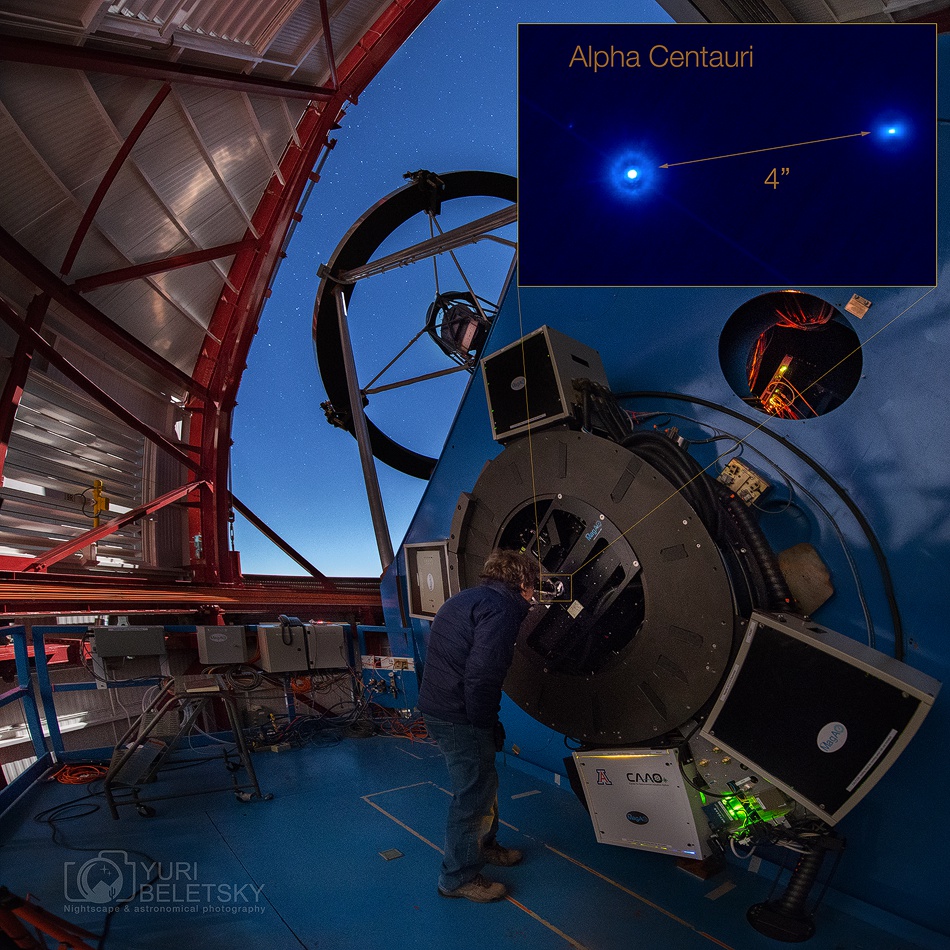
Copyright:Yuri Beletsky
原文:
Did you ever want to just look through the eyepiece of a large telescope in space? If you could, you would see a sharp view that was diffraction limited. Unaffected by atmospheric blurring that ultimately plagues earthbound observers, the angular resolution of your diffraction limited view would be determined only by the wavelength of light and diameter of the telescope lens or mirror; the larger the diameter, the sharper the image. Still, in this working earth-based snapshot a new active adaptive optics system (MagAO) is being used to cancel out the atmospheric blurring in a visual observation of famous double star system Alpha Centauri. Testing the system at the eyepiece of the 6.5 meter diameter Magellan Clay Telescope at Las Campanas Observatory, astronomer Laird Close is enjoying a historic diffraction limited view (inset) and the wide apparent separation of the close binary star system … without traveling to low earth orbit.
中文翻譯:
你曾經想過透過太空中的大型望遠鏡觀察星空嗎?如果可以的話,你會看到一幅清晰的影像,這影像是經過衍射極限(diffraction limited)的。無論是閃爍的星光還是清晰的星域,那壓根不會受到大氣模糊的影響,這是來自地球觀測所面臨的挑戰。你的衍射極限觀察能力只會受光的波長和望遠鏡鏡片或鏡子的直徑所決定—直徑越大,影像越清晰。
不過,在地球上的一個實驗中,新的主動自動光學系統(MagAO)正在被用來抵消大氣模糊的影響,從而讓觀察事務變得更清晰。我們的科學家Laird Close正在拉斯卡潘納斯天文台的6.5米直徑的Magellan Clay Telescope中,對著著名的雙星系統阿爾法星(Alpha Centauri)進行觀察,享受著歷史性的衍射極限視野(如插圖所示),以及該雙星系統寬廣的表觀分離… 而不必前往低地球軌道!
#AlphaCentauri #MagAO #AdaptiveOptics #Astronomy #Stargazing #LasCampanasObservatory #Telescope #Space #Science #Cosmos #StellarView #AstronomyLovers
來源:NASA每日圖片


